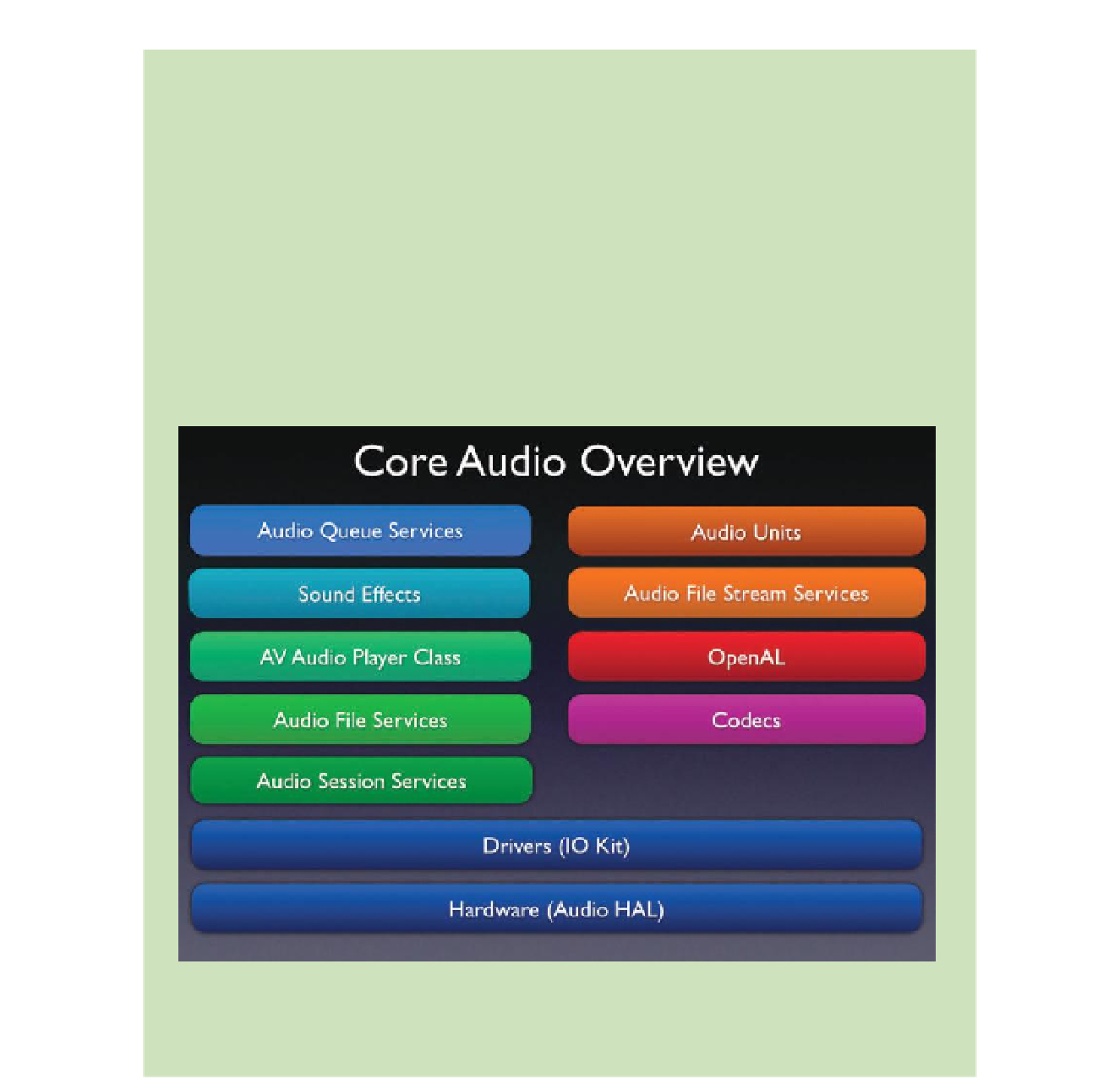Game Development Reference
In-Depth Information
IOS AUDIO SPECIFICS
The iOS operating system uses a specially optimized version of Core Audio, the subsystem used on all
Apple desktops and laptops. This system contains a lot of components and parts, only some of which you
may use when implementing sounds for a game. It uses one hardware-accelerated channel that supports
AAC (Advanced Audio Coding) and MP3 compression. The benei ts of running audio in hardware on the
iPhone or iPad are matters of priority and resources. It is best to trigger your most important sounds on
this channel, so you don't have to worry about them not playing correctly and on time.
iOS also of ers one software channel that supports up to 32 simultaneous streams, or tracks. These
streams can play compressed audio, but software-based i le decompression is more work for the CPU
and thus may not play as fast or as reliably as audio triggered by the hardware channel.
Core Audio uses OpenAL, a low-latency positional (3D) audio architecture originally developed by
Creative Labs, which provides Doppler and distance attenuation, but not occlusion or reverb.
This diagram shows the various services and libraries that make up Core Audio in iOS. In general,
any application will use Core Audio as a go-between framework that addresses the device
hardware and kernel drivers for audio. Any 3D positional ef ects or audio will be handled by
a custom version of OpenAL.
































